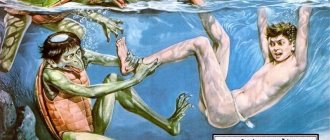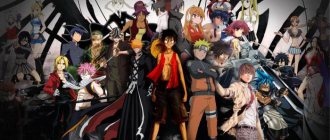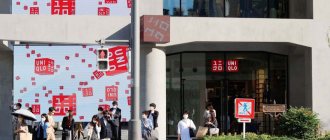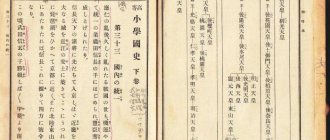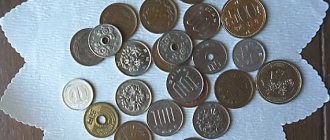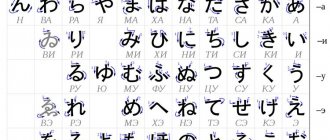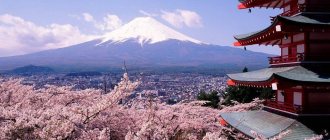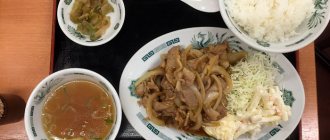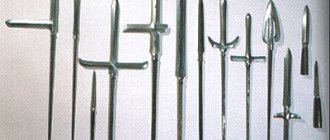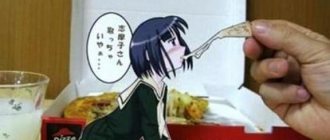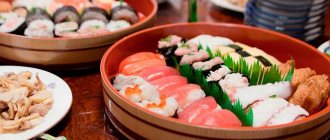Headings: Art, Favorites, Culture, Latest Articles
The Japanese do everything their own way. Music is no exception. Copying the style and presentation of the West, musicians from Japan produce their own product, unlike anything else. And even experimental music, from which it is difficult to determine where and by whom it was written, has a special style in Japan. The Japanese scene lives its own life, not paying attention to global trends. And now Western composers are adopting the “tricks” of their Asian colleagues. Let's figure out what makes non-format contemporary Japanese music stand out.
Jikken Kobo
Popular music performers in the 50s were limited in their creativity by contracts and obligations to record companies and producers, and therefore could not freely experiment and search for their own sound. Then the underground avant-garde scene began to flourish.
The Japanese began experimenting with art in 1951. Then the Jikken Kobo Society (Japanese for “experimental workshop”) was founded. Its participants - poets, photographers, artists and composers - were looking for new ways to express their thoughts and ideas through art. Western sounds and musical traditions were reworked according to the worldview of the Japanese - they tried to neutralize American influence by turning to the theme of Buddhism and their own musical traditions. The compositions featured Japanese national instruments, and the text was more reminiscent of Japanese poetry. Each piece was the result of an experiment. In 1958 the society ceased to exist. But at the site of the unification, many movements and groups immediately appeared who wanted to continue the work begun by the workshop.
First half of the 70s. Japanese New Wave.
In the 1970s, the New Wave era began in the West. The Japanese copied the sound and style of British and American groups such as This Heat, Talking Heads, New Order and many others. At the same time, they brought their own flavor and processed it in their own way.
The Plastics
Tokyo-based graphic designer Toshio Nakanishi designed and sent the design for the Talking Heads tour promotional book to their leader David Byrne. Along with the book, he sent several demo recordings of his band The Plastics. Byrne was interested in the recordings, and he passed them on to the B-52's manager, who subsequently invited Nakanishi to promote the Plastics. The group got its name because of the common opinion of the Western world about “plastic”, that is, low-quality Japanese goods, which were considered a low-grade counterfeit of really good American products. The Plastics did not deny American influence and often joked about it. They copied the style and presentation of Western performers, but the output was their own Japaneseized product. According to Byrne, the eccentric music of the pioneers of the Japanese New Wave had a serious meaning hidden behind external tomfoolery and frivolous behavior on stage. The group built their music around the symbiosis of an electric guitar and a synthesizer, accompanying the two overlapping voices of a man and a woman, dressed in jackets, shirts and ties. In the early 80s the group broke up. Several of its members created the group Melon, which also played new wave, but with elements of R'n'B, glam and did not limit itself to genre boundaries.
Yellow Magic Orchestra
Even before the creation of the group, all participants had extensive performing experience and a diverse repertoire. They performed in many bands, where they played classical, techno, j-pop and ethnic folk music. And the leader of the group, Hosono Harumi, began experimenting with electronic devices in the early 70s while studying at the Tokyo University of the Arts. He used the results of his experiments to create the first Japanese techno album. In 1978, the group released the group's self-titled album, which won the "Best Japanese Album of the Year" award and made YMO the most popular group in the country. Yellow Magic Orchestra performed danceable electropop and energetic synth-pop. Themes of cyberpunk and computerization in the lyrics were accompanied by sequencers, drum machines and a variety of electronic devices. After the album's release, Western performers became interested in them, including Michael Jackson, who recorded a cover of the song Solid State Survivor. In 1980, YMO went on tour in the US and UK, where they played to packed houses and sold out quickly.
Second half of the 70s. Protest music and awareness of problems.
In 1978, the Sex Pistols emerged in England with a nonconformist agenda and became idols for young people around the world. Most Japanese groups copied the style and presentation of the British, but there were those who tried to create their own projects, unlike Western ones.
Friction
Friction were one of the first to appear on the emerging rock scene in Japan. Before creating the group "Reck" and Tatsuya Nakamura lived for several years in the USA, where they played in the bands of Lydia Lynch and James Chance. They later returned to Japan and created the first punk rock band in the country. In 1978, guitarist Tsunematsu Masatoshi joined them. The team's first album, "Atsureki" (Japanese for Friction), was produced by Yellow Magic Orchestra keyboardist Ryuichi Sakamoto. Friction copied the style of American punks, but unlike the Americans, the Japanese made technically high-quality music. They knew how to play the instruments, the sound quality and mixing were at a higher level, and the musicians themselves behaved quite restrained on stage. And they looked more like rock and rollers from the 60s - multi-colored collared shirts, trousers and combed-back hair.
Inu
The Inu project (from Japanese dog) existed for several years and released only two albums. First album—Ushiwokamaru Name Tottarado Tsuitaru Zo! was recorded during semi-garage performances. Band leader Machizu Machida noted in an interview that critics considered the album's "raw" and "dirty" sound to be an avant-garde experiment, although in fact the musicians simply lacked skill in playing musical instruments. Typical Western-style punk rock - inarticulate screams, out-of-tune guitars and low sound quality - was complemented by instruments unusual for the genre - harmonica, bagpipes and electronic equipment, which was often used to record techno. Machida inserted various effects into the recordings—soldiers marching, gunshots, groans, and random lines from films—and also bleeped out individual words. A few years after the first, the band's only studio album, Mushi Kuuna, was released! This time the musicians took a responsible approach to recording and mixing the album. The sound became much clearer, the songs had a rhythm and theme. Despite its punk bent, the album was uneven. If in the first songs you can clearly hear a catchy pop motif, energetic percussion and rhythm section, then in the middle the music slows down, the guitars begin to grind, distortion drowns out Machida’s shouts, and the drums monotonously beat out the same rhythm. Towards the end of the album, the energetic, cleaner sound returns, the beat speeds up and the vocals become an incoherent drone.
Phew
One of the key figures of the Japanese avant-garde scene is Phew. The performer began her career in 1978 in Aunt Sally, a group that played a mixture of punk rock and psychedelia. Aunt Sally existed for only two years, having worked with famous experimental groups from Germany - DAF, Einstürzende Neubauten and Can. Rhythmic, monotonous vocals and melodic “childish” sounds of the harpsichord with an introductory drum march gave way to a fast cyclical motif, somewhat reminiscent of early Pink Floyd, and then turned into an avant-garde cacophony with a ragged rhythm and screaming vocals. In 1981, Phew began her solo career and released the improvisational album Phew that same year. Holger Szukay and Jaki Liebetsai from the German Can took part in the creation. The album was recorded and mixed in the studio of famous producer Konrad Planck in Cologne. The result is a minimalist post-punk album with an abundance of creaky electronic sounds, simple percussion parts with drawn-out monotonous vocals. Like many albums of that time, Phew was rediscovered relatively recently and received high praise from contemporary critics.
Jun Togawa
Jun Togawa was born in a country whose society rejected the past and did not allow open discussion of the problems of the present. Through music, Togawa sensitized audiences to two major taboo topics in Japan: historical revisionism and sexism. She began to study music when it became clear that changes were expected in Japanese society - Emperor Hirohito's health was deteriorating, the Showa era was coming to an end, and post-modernity was replacing modernity in Japanese culture.
In 1981, Jun joined Guernica, an avant-garde electro-cabaret group. The group members dressed in accordance with the fashion of the 40s: hair combed to one side, elegant suits for men and feminine dresses, jewelry and neat hair for Jun. The album covers were reminiscent of propaganda posters of the 30s - couples in love stand against the backdrop of large factories and look into the clear blue sky, dreaming of a strong, modernized Japan. The music of Guernica appealed to nostalgia for pre-war times while combining elements of popular German music from the first half of the 20th century.
Guernica criticized the state's attempts to rewrite history. The new state idea that “good conquered evil” - a new democracy overcame military militarism and renewed Japan - was supposed to replace the utopia of a powerful modernized empire. Through propaganda, the state tried to impose new ideas of national identity and teach the Japanese to perceive the past as an accidental misunderstanding that should now be forgotten.
The 1980s marked the beginning of the Golden Age of Japanese pop music. The most commercially successful projects were performers of kawai shojo (Japanese for “sweet girl”) - a sexualized image of an infantile girl, which was often used by "aidoru" - pop idols of the time. Jun herself considered herself the antipode of this image. A light, uplifting melody was superimposed on dark, nihilistic lyrics - gender inequality, menstruation, child abuse and cruelty were the leitmotif of Togawa's songs. The performer herself often used the image of an insect, sang on stage in a dragonfly costume and noted in an interview her love for parasites and worms, which for her personified freedom from human influence.
Sources of knowledge about Japanese traditional music
Among the sources of knowledge about the traditional music of Japan, it is necessary to name archaeological sites, Chinese dynastic chronicles, Japanese historical chronicles, chronicles of the imperial court, Buddhist and Shinto religious records, literary monuments, dramatic works, legislative codes. Undoubtedly, musical notations are valuable sources, the study of which is of particular interest, if only because they are completely different from the European notation system. It was not until the end of the 19th century that Japanese music began to be written in European notation, and before that a system borrowed from China was used of marks, lines and various shapes to the right or left of the text to indicate strings, tablature, rhythm, tempo and shades . Moreover, since, unlike the European system, it was not a specific note that was designated, but a string or the arrangement of fingers on the flute, and the rhythm was not completely prescribed, but only a rhythmic pattern was specified, then, without knowing the melody in advance, it was impossible to play the notes. In addition, badges and figurines differed depending not only on the musical instrument, but also on the school within the same genre. Therefore, the study of Japanese music from musical notations has limitations and requires detailed knowledge of one or another notation system. Also, many song and story works were passed down from generation to generation by ear and were not recorded, therefore, unfortunately, a significant part of folk music has been lost.
Knowledge of ancient music in Japan is based almost exclusively on archaeological evidence, for example, clay haniwa figurines provide insights into the instruments of the time: the Yamato -bue wagon lute or Yamato-goto and other primitive instruments.
The first written mentions of Japanese music appear in Chinese chronicles. Thus, the chronicles of the 3rd century of the Chinese dynasty Wei Zhi talk about a trip to Japan and the songs and dances of the ritual rite.
There is a story dating back to the 3rd century about Korean musicians instructing the Japanese to preserve ship wood as it was ideal for making instruments.
Music is further mentioned in the Japanese chronicles Kojiki (712) and Nihon Shoki (720). Thus, the Nihonshoki reports that in 454, 80 Korean musicians were sent to the Japanese capital to perform music on the occasion of the death of Emperor Ingyo.
The Shoku Nihongi, a historical chronicle from the 8th century, talks about music for ritual initiations in Buddhist and Shinto shrines.
Religious recordings are an important source, as music was invariably associated with the rituals of Shinto and Buddhism.
The Manyoshu, the greatest poetry anthology of the 8th century, contains more than 4,000 poems, many of which are considered folk songs reworked in an aristocratic style. The theme of music appears in both The Tale of Genji and other literary works of later times.
Legislative codes and acts reflect the institutional basis of musical development: for example, the Taihoryo code of laws establishes the administration of gagaku.
80s. Ambient, nature sounds and techno.
Ambient music, invented in the 70s by Briton Brian Eno, came to Japan only 10 years later. Eno planned to create background music for airport lounges, and ended up discovering a new genre. A similar story happened with Japanese ambient music. Pioneers of the Kankyo Ongaku genre (Japanese for environmental music) wrote music for business, advertising, and cultural and leisure settings. However, there were those who saw the potential for creativity and experimentation in ambient minimalism.
Hiroshi Yoshimura
Hiroshi Yoshimura was one of the pioneers of the genre. The Japanese wrote his first album, Music For Nine Post Cards, for the Hara Museum of Contemporary Art. The music was liked by visitors and was noticed by composer Satoshi Ashikawa, who included the album in his collection “Wave Notation”. Yoshimura has composed music for galleries, exhibitions, shows, museums and even the Japan Broadcasting Company. However, it was not popular outside of Japan. The composer's most famous album, Green, was recorded at his home studio in 1986. The soothing murmur of water, the singing of birds and the chirping of crickets were combined with a slow synthesizer melody. According to his idea, while listening to the album, an image of a calming landscape should be created in the head, which the author associated with the color green. Yoshimura died in 2003. During his life, he wrote 12 albums, which during the composer’s lifetime were known to a small circle of the creative intelligentsia. After the “rediscovery” of the genre by American music critics in 2017, Yoshimura’s albums began to be re-released, and the Japanese himself began to be considered the father of Kankyo Ongaku.
Haruomi Hosono
In his solo project, Yellow Magic Orchestra leader Harumi Hosono played the opposite of YMO music. He took as his basis the silence, slowly filled with the chirping of crickets, the sounds of rain, Japanese wind instruments and meditative gong strokes. The sounds of nature, filled with long pauses and the Buddhist rhythm of instruments, created an atmosphere of peace and silence. His most famous ambient album, 1984's Watering a Flower, was originally created as a series of tracks to be played at Muji's first store in Tokyo. The album, like most of Hosono’s solo work, went unnoticed for a long time, but in 2017 the recording was found by American music critics, after which the album began to appear in various selections of ambient albums by famous Western publications.
Mkwaju Ensemble
In the early 80s, the Japanese actively experimented with electronic devices, but the monotonous sound of sequencers and drum machines did not suit everyone. Then Japanese musicians paid attention to the musical culture of Africa, Asia and Australia.
Members of the percussion trio Mkwaju Ensemble played African drums, bamboo planks, marimbas and a variety of other traditional instruments from Africa and Asia. Japanese national music intertwined with African motifs of the rhythmic beats of bongos, claps and wind instruments. The musicians experimented and improvised a lot, changing the rhythm and tempo of the compositions on the fly. The monotonous pounding of the drums and the hum of the wind instruments accelerated as unexpectedly as it slowed down. Mkwaju Ensemble did not last long, leaving behind only 2 albums, popular in narrow circles of avant-garde lovers.
Midori Takada
Their successor, Midori Takada, went even further and added idiophones, gongs and rattles to the African marimbas. In her cult ambient album Through the Looking Glass, she combined European, Asian and African influences. In addition to the instruments used by the Mkwaju Ensemble, Takada played glass Coca-Cola bottles and an ocarina, which she used to imitate the sounds of birds. When creating the track Catastrophe ∑, the musician achieved even greater success in extracting sound from improvised objects. Any object that could be knocked on was used. According to her, she experimented with various objects because she believed that sound could be extracted from everything in the world, and people simply did not realize this. Several years ago, Takada's work was rediscovered by music critics. In 2021, Swiss label WRWTFWW reissued Through the Looking Glass on vinyl, and its electronic version became the second best-selling album on Discogs that same year. 66-year-old Takada went on her first tour of the United States, which attracted even more attention from listeners to Kankyo Ongaku.
P-Model
The musical project “P-Model” was very productive - over 20 years, the musicians released 13 albums, several albums from live performances, many singles and video clips. Fans of sci-fi and electro experimentation, P-Model played fast, uplifting techno and post-punk tunes. The key themes played out in the songs are robotics and cyberpunk, whose heyday came in the early 90s. The composition of the group was constantly changing, members left and returned. From start to finish, only the group leader, Susuma Hirosawa, was in the group. In 1992, the renewed lineup of P-Model recorded an album of the same name, which became the most popular among fans of the Japanese underground scene of that time. The overarching theme of the release was computerization, as well as the influence of science and technology on the culture and society of Japan. The album has inspired many artists, musicians and directors such as Satoshi Kon, Kentaro Miuera and many others.
Japanese music during the war and post-war years
Since 1941, Western music has been performed mainly by the Tokyo Symphony Orchestra . In 1945 it was renamed the Toho Symphony Orchestra , the New Symphony Orchestra became the NHK (Japan Broadcasting Corporation) Orchestra, and many other symphonies began to appear.
There is also a movement of Roon workers to introduce the working people to musical culture.
Japanese composers of this time, when composing operas, took Japanese tales and Buddhist legends as a basis.
In 1951, an electronic music studio opened at NHK.
The Japan Contemporary Music Association , which existed before the war under other names and organized festivals every year, the Association of Contemporary Composers (1946), Shinseikai (1946), Chijinkai (1948) and the experimental studio Jikken Kobokai (1949) were created
In the 60s group, the Ongaku and New Direction groups appeared, advocating improvisation, but many groups composed music for the Nipponia Orchestra, consisting of traditional instruments.
Foreign musicians began to visit Japan again from the mid-1950s, and Japanese musicians and composers also became famous abroad.
Currently, Western music is thriving in Japan. Teaching, performance, musical literature, instrument making - all this is now not inferior to Europe. There are six symphony orchestras in Tokyo, and all types of Western music are performed and composed in Japan, from Renaissance and Baroque music to jazz, rock and other contemporary styles. The confrontation between Western and traditional music remains, but is not expressed as clearly as it was before.
90s. A new generation of experimenters.
Tujiko Noriko
Noriko is often compared to Bjork. Both love to experiment and build viscous, spacious compositions with ambient elements. But the Japanese woman does not seek to create the image of an unearthly diva singing about inequality, victimization and mental anguish. Her music is more “childish”, does not carry a strong semantic load and does not edify. Noriko herself describes her work as “a slight departure from the laws of the genre.” She adds electronic effects, glitch and “pulsating” bass to the pop melody, which ultimately merge into hum and noise, from which it is difficult to isolate even synthesizer and drum parts. Over the years, the performer's music, which at the beginning sounded childishly naive, becomes more gloomy and melancholic.
Supercar
Supercar's lineup was assembled in 1995 through an advertisement placed in a local newspaper by Miki Furukawa, the band's bassist and vocalist. In their first albums, the musicians played a mixture of shoegaze and indie rock, but over time they plunged into experiments with electronic sound. If the first releases Three Out Change and Jump Up combined light pop melodies with simple lyrics, distortion of Western My Bloody Valentine and Ride and reverb atypical for Japanese rock bands, then after the third album Futurama the emphasis was placed on experiments with electronic devices. The harsh sound of shoegaze was replaced by soft and structurally more complex synth-pop. Guitars, as the main instrument, were replaced by synthesizers, and the lyrics became melancholic and poetic. In the last albums Supercar experimented a lot and added various instruments - violins, percussion and sirens.
OOIOO
OOIOO began as a side project of Boredoms drummer Yosimio in 1996. Each project album can be divided into sections, between which there is no connection. In the quartet's music, the rhythm constantly breaks and the processing of the voice changes. The melody may suddenly be interrupted and resumed in a completely different form. The group concentrates on improvisation and eclecticism in the studio, and during performances they shock with sound and keep the listener in suspense - it is not clear in what direction the melody will develop and how it will end. A slow, trance-inducing “groove” with an abundance of drums can suddenly turn into a psychedelic chaos of sounds, and an energetic ritual melody can be replaced by rough noise. It seems that music is created chaotically, and the musicians want to surprise the listener with unpredictability. But that's not true. In his interviews, Yosimio says that songs are created as a result of trying out various instruments and techniques. She takes work on tracks seriously. In the studio the band plays the way they would play live. Yosimio then reworks the recording and adds his own parts, often playing instruments that the band has not yet used.
Masakatsu Takagi
In the early 2000s, Masakatsu Takagi worked as an artist and videographer. He traveled a lot around the world and filmed the places he visited. Along the way, I recorded local music and unusual sounds. As a result of his travels, the Japanese collected many samples. He compiled them and then added piano and sequencer parts to them. This is how his first album Pia, recorded in the USA in 2001, turned out. The musician later moved to a mountainous area in Hyogo Prefecture. Living among the mountains greatly influenced Takagi's music. He began recording the sounds of nature coming from the window, the voices of passing people and flying birds. Takagi's music became famous in Japanese creative circles. The composer received offers of cooperation from theater directors and animators who wanted him to write music for their works. Among them are Studio Ghibli and director Mamoru Hosoda.
Takagi's concerts consist of a theatrical performance for which an orchestra of traditional and classical instruments, percussion and winds performs the music. Actors and musicians are constantly changing. The rhythm, mood and visual design, to which the musician pays special attention, also change.
If you find an error, please select a piece of text and press Ctrl+Enter.
artculturemusic
